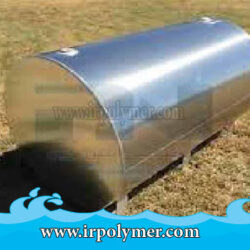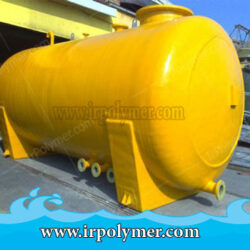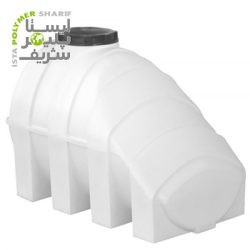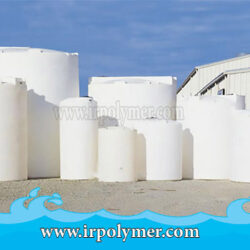Today, fire suppression systems are mandatory in buildings, including residential, commercial, factories, and workshops. Therefore, acquiring a firefighting water storage tank is essential.
Types of Firefighting Water Storage Tanks:
- Hot-dip Galvanized Tank
- Single to Triple Layer Polyethylene Tank, available in vertical, horizontal, or bottom conical configurations
- GRP Panel Composite Tanks
Galvanized Firefighting Water Storage Tank Source
Galvanized tanks are constructed from steel coated with a layer of zinc. In this process, steel is immersed in a molten zinc bath. During the cleaning stage, surface grease is removed, followed by rinsing with warm water. Afterward, they undergo a hot air drying process. They offer high resistance to severe impacts, easy maintenance, and the ability to be manufactured in various dimensions are among the advantageous features of this tank type. Galvanized tanks resist corrosion and are responsive to quick needs. Their vulnerability during transportation is minimal, and their quality can be easily assessed.
Polyethylene Firefighting Water Tank
Polyethylene tanks are economically viable and offer superior flexibility compared to galvanized tanks. ABtank is the leading producer of high-volume polyethylene sources, proficient in manufacturing firefighting water storage tanks with the highest quality.
Fiberglass Firefighting Water Tank
GRP Panel Fiberglass Tank is a modular system that, due to the need for infrastructure, incurs higher costs compared to polyethylene sources. However, because the tank is modular and its panels can be opened, transportation is easier, making it recommended for volumes exceeding 30,000 liters. GRP tanks are reinforced plastic fibers that can act as insulation. These tanks can be installed on the ground, roof, or inside buildings. Prominent features include high durability, UV resistance, excellent performance, resistance to freezing, and algae growth prevention. Additionally, they lack metallic elements near water, allowing for expandable storage. Fiberglass tanks can be made from resins such as polyester, vinyl ester, and epoxies.
One common type is unsaturated polyester. These tanks are used in environments requiring thermal and acid resistance, including acid tanks. They undergo multiple physical and chemical tests to ensure long-term performance, with mechanical and chemical properties evaluated in a quality control unit. Tests for this type of firefighting water storage tank are conducted according to international standards such as ASTM, ISO, etc. A sample of these panels is shown in the figure below.
PVA/TPU Tank
A type of discharge tank or emergency water storage source, PVA/TPU from ABtank, is used for convenient water storage in emergency situations. Their easy transportation during emergencies is noteworthy. Finally, it should be noted that plastic tanks should be avoided in environments prone to fire hazards. Despite their higher cost in some environments, stainless steel or galvanized tanks are preferable for firefighting water storage. For more information and free consultation, please contact our headquarters at: 021-44787073.
Calculation Formula for Firefighting Water Storage Tank Volume
To calculate the volume of a firefighting water tank, first determine the pump discharge flow rate based on the motor’s technical specifications. Then, determine the number of fire hydrant boxes connected to the tank, and finally, calculate the volume of the firefighting water storage tank according to the following formula:
E = 10 * M
Where:
E is the total tank volume.
10 is the pump discharge flow rate specified.
M is the number of fire hydrant boxes connected to the tank.
Importance of Firefighting Water Tanks
Firefighting water tanks require high-volume capacity and high-pressure pumps. Vortex inhibitors (VI) play a key role in preventing air from entering the system and reducing flow. Vortex inhibitors are usually installed on the pump outlet pipe. One of the common applications of firefighting water storage tanks is protecting distribution centers and other large storage facilities. Firefighting water storage tanks are used in firefighting systems when municipal water supply is insufficient.












